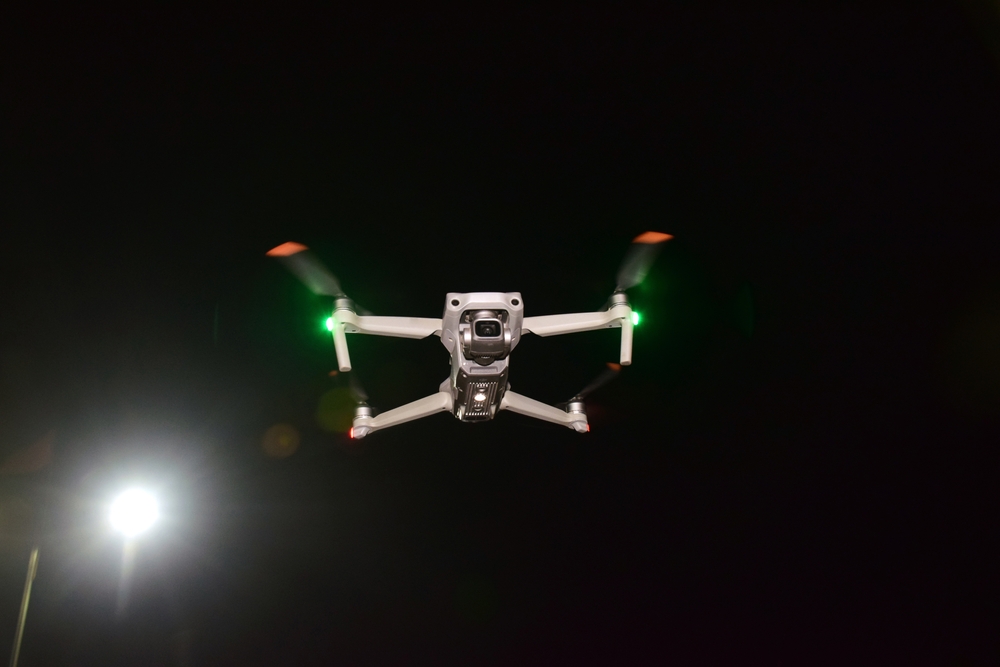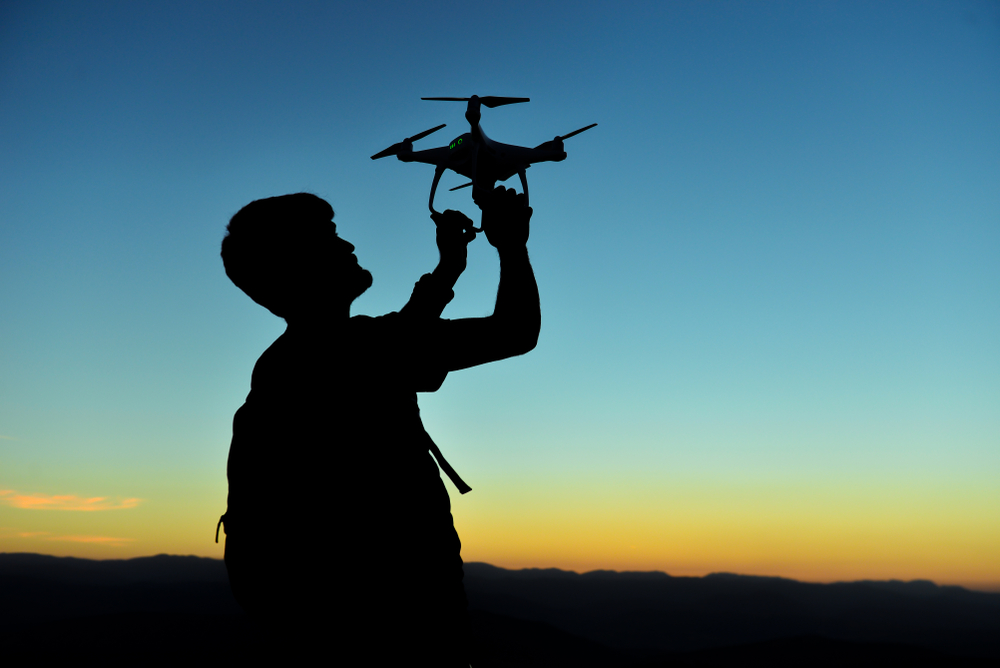UFO’s Are Swarming U.S. Military Zones-and One Just Crashed Into a Fighter Jet

Imagine soaring through the skies at 20,000 feet, training in one of the world’s most advanced fighter jets—only to be blindsided by something you can’t even name. No warning. No explanation. Just impact.
This isn’t a scene from a sci-fi movie or the start of a conspiracy podcast. It’s real. In January 2023, a U.S. F-16 was struck midair by a mysterious flying object over the Arizona desert—a space where nothing unexpected is supposed to fly. And yet, it did.
That single collision was just one in a growing series of bizarre aerial encounters reported by military pilots. Swarms of unidentified objects—some glowing, some hovering motionless at impossible altitudes, some moving faster than known drones—have turned the restricted airspace over Arizona into a riddle wrapped in a radar signature.
What’s going on in our skies? Are we witnessing a leap in criminal tech, a lapse in security, or something more elusive? One thing is certain: the unknown is getting uncomfortably close.
A Pattern in the Clouds – Swarms, Speed, and the Unexplainable
The January 2023 collision wasn’t an isolated event—it was part of a concerning pattern that’s been steadily unfolding in Arizona’s military airspace. Since 2020, military pilots have reported a cascade of strange aerial sightings, many of which defy both expectation and conventional explanation. These aren’t secondhand tales or amateur videos. They’re official reports from trained aviators flying billions of dollars’ worth of aircraft.
The objects they describe range from swarms of eight silver drones flying in tight formation at 20,000 feet, to metallic spheres darting across the sky, to a glowing blue-green craft spotted at 36,000 feet—altitudes where commercial jets roam, not hobbyist drones. One UAS was seen hovering motionless at 24,000 feet, described as looking more like a small aircraft than anything sold at your local electronics store. And on at least one occasion, an object was clocked at Mach 0.75—around 500 miles per hour. For comparison, most consumer drones can’t exceed 45 knots (about 52 mph) and typically can’t climb above 500 feet.
UFO striking fighter jet is among swarm of mystery objects spotted near US military sites: reports https://t.co/0WabiwZGMv pic.twitter.com/0e6UFzNOm6
— New York Post (@nypost) May 18, 2025
Former Pentagon UAP investigator Luis Elizondo has called Arizona’s southern border a hotbed for these encounters, noting how frequently reports come in from pilots flying over these zones. The data backs him up. Between May 2023 and June 2024, 757 sightings of unidentified aerial phenomena (UAP) were logged by the U.S. government. Only 49 have been closed.
These patterns are more than just curiosity—they point to a persistent disruption of restricted airspace where military readiness and flight safety are paramount. It’s no longer a question of whether something unusual is happening. It’s how often, how advanced, and how close to critical operations these unknowns are getting.
The consistency of these sightings—combined with their growing frequency—demands deeper scrutiny. Because when the sky above our military becomes uncertain, the ground below has every reason to pay attention.
Drones or Something Else? Theories and Threats

When something unknown enters restricted military airspace—not once, but repeatedly—it forces a critical question: What exactly are we dealing with?
The leading theories fall into two camps. The first is unnerving but grounded—advanced drone technology, possibly operated by transnational criminal organizations like drug cartels. Former Customs and Border Protection official Ron Vitiello suggests these groups are deploying high-end surveillance drones, far more sophisticated than anything the public typically sees. With nearly limitless funding and a relentless drive to innovate, cartels have reportedly used drones to smuggle up to 10 kilograms of narcotics at a time, navigating U.S. airspace with stealth and precision. “That’s part of their business model,” Vitiello says, “to always be able to iterate and innovate.”
This theory would explain how small, fast-moving objects can appear suddenly and evade detection—if cartel engineers have managed to outpace publicly available drone tech. But it doesn’t explain everything.
Some of the aerial behaviors described in these incidents stretch the boundaries of even the most advanced known drone systems. Objects hovering motionless at high altitudes, flying in tightly packed formations at speeds rivaling small jets, and glowing with an unexplained luminescence suggest capabilities not yet openly acknowledged by any state or non-state actor.

This leads to the second, more mysterious possibility: that these objects represent a class of aerial technology that falls outside our current understanding—or at least outside public knowledge. Whether they’re experimental military projects, foreign reconnaissance tools, or something else entirely, no official explanation has been offered.
And that’s where the real threat lies—not just in what the objects are, but in what we don’t know about them. Their very presence in sensitive training zones puts pilots, missions, and national security at risk. If even a small percentage of these sightings are of craft with capabilities beyond what’s currently accounted for, then we’re not just dealing with a technology gap—we’re dealing with a blind spot.
The sky may look clear, but in Arizona’s airspace, the unknown is hiding in plain sight.
The Bigger Picture – What These Encounters Reveal About Us

Beneath the metallic glint of unknown objects streaking across Arizona’s skies lies a deeper story—one that speaks less about what’s “up there” and more about what’s missing down here: preparedness, transparency, and trust.
Let’s start with preparedness. The fact that something—be it cartel tech or a completely unknown entity—can repeatedly penetrate restricted U.S. military airspace without immediate identification raises urgent questions about our surveillance systems. Are we so focused on threats we understand that we’re not seeing the ones we don’t? The collision with an F-16 wasn’t just a freak accident—it was a wake-up call. If these objects can disrupt elite military operations, they can potentially threaten civilian air travel, homeland security, or worse.
Transparency is the second crack in the system. Despite hundreds of sightings, only a small fraction—49 out of 757—have been “closed,” according to the Department of Defense’s All-Domain Anomaly Resolution Office. And for the public, most of what’s shared feels piecemeal, filtered, or vague. This lack of open dialogue only fuels speculation. When officials say little, the imagination fills in the rest. It’s not conspiracy thinking—it’s a human response to a silence that feels too wide.
And that brings us to trust. In an age where misinformation moves faster than truth, the gap between what governments know and what they disclose creates fertile ground for fear. When people hear “unidentified aerial phenomena,” they don’t just think about flying objects—they think about coverups, power, and who controls the narrative. Whether these sightings are explainable or extraordinary, the real danger lies in a breakdown of credibility.
These events challenge more than just radar systems. They challenge our systems of accountability. They ask whether we are as advanced as we think we are, or if we’re still playing catch-up in a world where threats no longer wait for us to understand them.
A Sky Full of Questions – Reflecting on the Unknown

Maybe the most unsettling thing about these objects isn’t what they are—it’s that we still don’t know. They’ve collided with fighter jets, danced in formation through restricted skies, and hovered silently above our most secure airspace. And yet, they leave behind more questions than answers.
But perhaps that’s exactly the point.
These encounters force us to confront something we often avoid: uncertainty. In a world obsessed with control, prediction, and explanation, there’s discomfort in admitting that some things still lie beyond our reach. Whether these aerial phenomena are advanced cartel tech, foreign surveillance, or something that stretches the boundaries of current science, one truth remains—the unknown is not out there to be feared, but to be faced.
Because how we respond to the unknown says more about us than the mystery itself.

Do we default to denial? Do we cling to the easiest explanation? Or do we lean in—with curiosity, courage, and a demand for truth?
This isn’t just about UFOs or military sightings. It’s about cultivating a mindset that embraces the complexity of our world. It’s about demanding transparency not just from our institutions but from ourselves. To admit that we don’t know everything. To question without panicking. To wonder without surrendering to fantasy.
As we look to the skies, let’s also look inward. What else have we ignored simply because it didn’t fit our expectations? What else might we discover—about the world, about others, about ourselves—if we stopped fearing the unknown and started learning from it?
So the next time you hear about a strange object in the sky, don’t just ask what it was. Ask why it matters that we noticed.
Beyond the Radar: What These Skies Are Telling Us
What began as a midair collision between a fighter jet and a nameless object has spiraled into something far more profound—a mirror reflecting our vulnerabilities, our curiosity, and our need for clarity in a rapidly shifting world.
The truth is, these objects—whatever they are—aren’t just invading our skies. They’re intruding on our comfort zones. They challenge the assumption that we’ve already mapped and mastered our environment. They remind us that despite all our intelligence, there are still forces—technological, criminal, or perhaps something entirely different—moving just outside our line of sight.
But fear should not be our final destination. Instead, let these events sharpen our focus, deepen our questioning, and ignite our demand for truth. Whether it’s technology from rival powers, innovations driven by illicit industries, or something more enigmatic, we owe it to ourselves—not just as citizens but as thinking, feeling human beings—to stay awake, informed, and curious.
After all, the sky has never just been a ceiling. It’s a canvas. And right now, something—or someone—is painting on it in strokes we don’t yet understand.
The question is: will we keep looking up? Or will we look away?
Loading...

